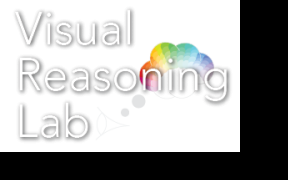Our research is motivated by the Color Inference Framework, an account of how people use associations between colors and concepts to make judgments about the world. The Color Inference Framework has three key premises:
(1) Color-concept associations. People continually form and update associations between colors and concepts as they experience the world.
(2) Color-concept association network. Color–concept associations can be represented in a network, with weights on the edges that represent association strengths. For example, a strong weight might connect the concept banana and a saturated yellow, whereas a weight near zero would connect banana and saturated blue. This network structure helps conceptualize how people form coherent judgments under conflicts that arise from the lack of one-to-one correspondence between colors and concepts in the world. Weights vary across the network depending on the relevance of particular colors and concepts for the judgment at hand. Thus, the network structure can adjust to fit the given perceptual and conceptual context.
(3) Color inferences. People make inferences using the color–concept association network to produce judgments. So far we have identified three types of inference operations that result in three types of judgments: pooling results in judgments about preferences for colors, transmitting results in judgments about preferences for concepts, and assigning results in interpretations about the meaning of colors in visual encoding systems (e.g. information visualizations).
Our current research focuses on understanding how color-concept associations are formed, and how they are used to interpret information visualizations. Our focus is on color, but our findings should extend to other perceptual features insofar as people have systemic associations between those features and concepts.
